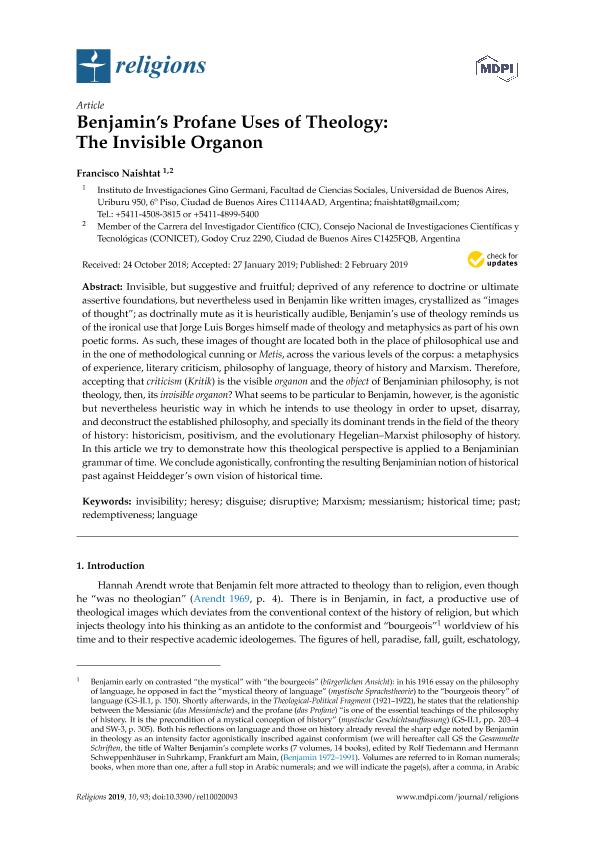Artículo
Benjamin’s profane uses of theology: The invisible organon
Fecha de publicación:
02/2019
Editorial:
Multidisciplinary Digital Publishing Institute
Revista:
Religions
e-ISSN:
2077-1444
Idioma:
Inglés
Tipo de recurso:
Artículo publicado
Clasificación temática:
Resumen
Invisible, but suggestive and fruitful; deprived of any reference to doctrine or ultimate assertive foundations, but nevertheless used in Benjamin like written images, crystallized as “images of thought”; as doctrinally mute as it is heuristically audible, Benjamin’s use of theology reminds us of the ironical use that Jorge Luis Borges himself made of theology and metaphysics as part of his own poetic forms. As such, these images of thought are located both in the place of philosophical use and in the one of methodological cunning or Metis, across the various levels of the corpus: a metaphysics of experience, literary criticism, philosophy of language, theory of history and Marxism. Therefore, accepting that criticism (Kritik) is the visible organon and the object of Benjaminian philosophy, is not theology, then, its invisible organon? What seems to be particular to Benjamin, however, is the agonistic but nevertheless heuristic way in which he intends to use theology in order to upset, disarray, and deconstruct the established philosophy, and specially its dominant trends in the field of the theory of history: historicism, positivism, and the evolutionary Hegelian–Marxist philosophy of history. In this article we try to demonstrate how this theological perspective is applied to a Benjaminian grammar of time. We conclude agonistically, confronting the resulting Benjaminian notion of historical past against Heiddeger’s own vision of historical time.
Archivos asociados
Licencia
Identificadores
Colecciones
Articulos(SEDE CENTRAL)
Articulos de SEDE CENTRAL
Articulos de SEDE CENTRAL
Citación
Naishtat, Francisco; Benjamin’s profane uses of theology: The invisible organon; Multidisciplinary Digital Publishing Institute; Religions; 10; 2; 2-2019; 1-16
Compartir
Altmétricas




